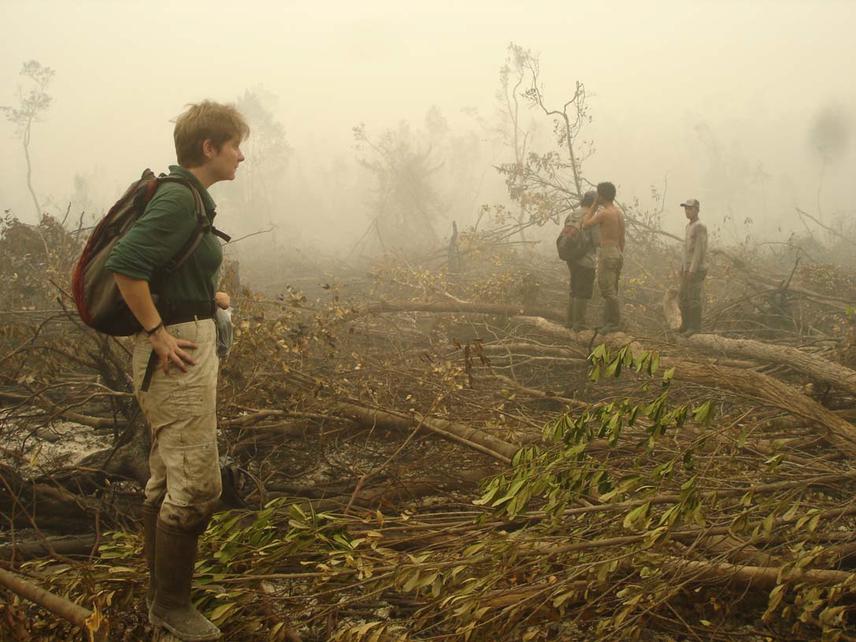Susan Cheyne
Other projects
9 Feb 2007
Orang-utans and Gibbons Compared: Implications of Differences in Feeding and Behavioural Ecology for Conservation I
29 May 2008
Orang-utans and Gibbons Compared: Implications of Differences in Feeding and Behavioural Ecology for Conservation II
The Orangutan Tropical Peatland Project – working to protect the Sabangau peat-swamp forest and biodiversity since 1999.

Dr Susan Cheyne surveying the forest after a devastating fire near camp.
The Sabangau catchment is home to the world’s largest remaining populations of orang-utan and agile gibbon. However the area continues to be affected by logging and illegal timber extraction continues. Successful conservation management of orang-utans and gibbons requires knowledge of their ecological requirements and their ability to survive in a degraded habitat. Survival and reproduction depends on individual animals maintaining a positive or neutral energy balance, which depends on both energy intake and expenditure and availability of important food species.
We have identified a number of key differences in the two species’ behavioural, feeding and locomotor ecology, but it is not clear how this affects their ability to survive in disturbed peat-swamp forest. If we are to effectively conserve these populations and prevent population declines, it is therefore vital to understand how these differences affect energy intake, travel efficiency and, ultimately, energy balance in the long term. We have already made substantial progress towards this aim between 2005-07. The importance of long-term research and conservation presence in an area cannot be overlooked and it is for this that we seek additional funds to continue our work in this ecosystem.
The 2001-2002 crash in Sabangau orang-utan numbers represents the largest population crash ever reported for this species. This is thought to be due to compression of individuals into unlogged/sub-optimal areas to escape logging disturbance, where reduced food availability and changes in forest structure resulted in animals dying. Gibbons are likely to have experienced a similar, though probably less dramatic, crash during this period. Had data on the contribution of different food species to overall energy intake, long-term total energy intake and balance, and the effects of increased canopy gap size/frequency been available, it may have been possible to have anticipated, and thus prevented, this crash.
Furthermore, orang-utan (and probably also gibbon) reproduction is suppressed during sustained periods of negative energy balance, and so reduced energy intake and travel efficiency post-disturbance may reduce the ability of these species to recover from disturbance. It is vital that this information is now obtained in order to prevent similar future crashes. By collecting these data and putting in place protocols for the long-term monitoring of the importance of different food species and energy intake, this study represents an important step towards the effective conservation of these two species, both in Sabangau and beyond.